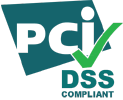In our last post, we talked about the maturity stage of the credential life cycle.
A mature credentialing program may end up exhausting (penetrating) the target market. Test volumes and revenues plateau.
In her book, The Business of Certification, author Lenora Knapp notes that a mature credentialing program must either extend the test-revenue plateau for as long as possible before revenue decline or find new sources of revenue to stimulate growth.
One new revenue source would be to expand the credential to international markets. This was discussed in last week’s post entitled, Going Global With Your Credential?
Another revenue option would be to market your credential to academic programs as a requirement for obtaining a college degree.

Embedded Credentials
A 2017 study, sponsored by the Lumina Foundation and entitled Embedding Industry and Professional Certifications within Higher Education, reported results on the practice and impact of embedding industry and professional certifications within higher-education curriculums.
Here are some takeaways of the study:
- Today some 3.3 million Americans between the ages of 25 and 64 hold job-related certifications as their highest post-secondary credential.
- The purpose of embedding industry certifications within higher education is to equip students with real-world skills and prepare them for the demands of the workplace.
- Embedded credentials allow students to simultaneously obtain one or more marketable industry/professional certifications inside a traditional two-year or four-year degree program.
- Embedded credentials are more commonly found in community colleges than in four-year institutions. More available grants at the community-college level may explain this.
- In four-year institutions, partnerships to embed credentials are most prevalent in management and business, healthcare, public safety, and information-technology curriculums. In two-year institutions, such partnerships are most prevalent in manufacturing, welding, information technology, and healthcare.
- For the most part, the cost of taking embedded certification exams is borne by students. It’s less common to find such costs included in college tuition.
Why embedding is important
If your credential has entered the mature phase of its life cycle, adoption by an academic program may become a welcome and sustainable new source of revenue.
Associating your credential to the reputation of a prestigious or well-regarded educational institution can raise the stature of your own program.
The relationship can also become a strategic differentiator in the market elevating your credential above those of your competitors. This could be an opportunity to reposition your program in the minds of your prospects.
Compared to other new-revenue solutions like expanding your credential to international markets, pursuing adoption by a college or university comes at a much lower cost.
Lastly, students who learn of your credential in college are primed to become repeat customers for your other credentials during their careers. Companies like Apple computers and Adobe software have indoctrinated college students to their brands to highly profitable effect.
Contact us!
Kryterion has worked with credentialing clients—start-ups through mature programs—across many industries for more than 20 years. If you have questions about your credentialing program, feel free to fill out our short form here. We’ll follow up with an email with convenient times for your free, no-obligation phone call. Talk soon!
The Kryterion Team
P.S. Accredible, our integrated solutions provider, provides digital badges and certificates for more than 700 companies and colleges/universities. They have great ideas for using badges to recognize successful test candidates and amplify the success of any credentialing program. Just click the banner below to learn more!







